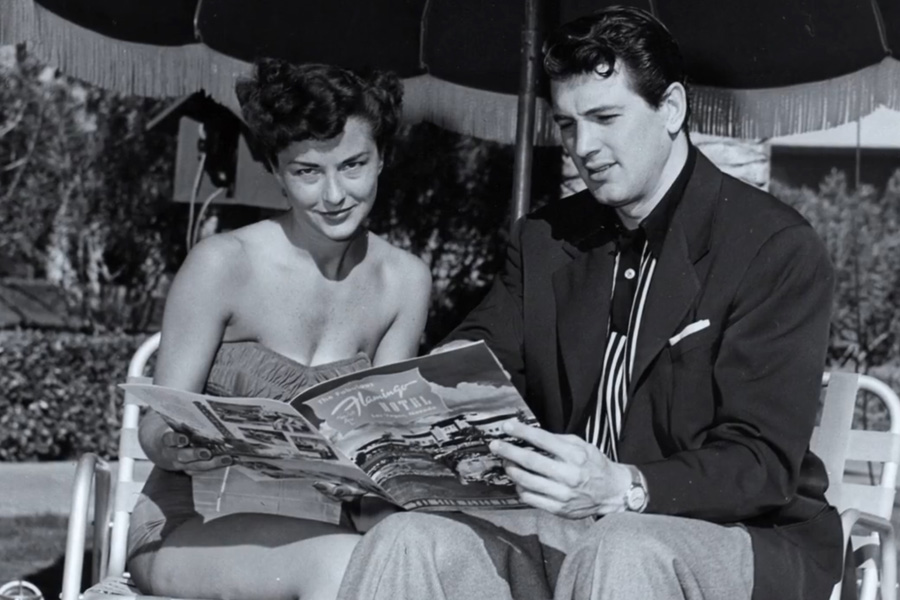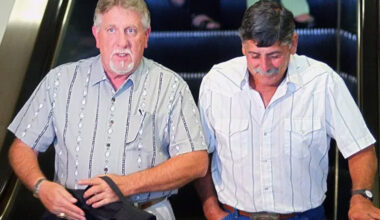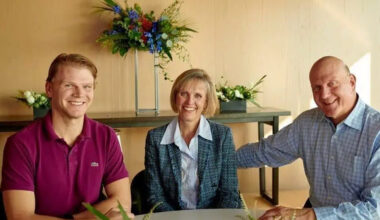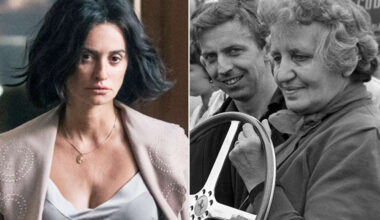Basic Information
| Field | Details |
|---|---|
| Name | Timothy Scott Roman |
| Birth | January 27, 1964, Los Angeles, California |
| Death | January 22, 2003 (age 38), complications of Creutzfeldt-Jakob disease |
| Height | 5 ft 4 in (after treatment) |
| Mother | Susan Cabot (1927–1986), actress |
| Adoptive/Stepfather | Michael Roman (m. 1968, div. 1983) |
| Rumored Biological Father | King Hussein of Jordan (1935–1999) |
| Education | Pierce College (art and biochemistry coursework) |
| Medical History | Pituitary dwarfism; cadaver-derived human growth hormone injections, 1970–1985 |
| Notable Event | Convicted of involuntary manslaughter in the 1986 death of his mother |
| Residence (primary) | Encino, Los Angeles, California |
| Marital Status | Never married; no children |
| Cremation | Ashes scattered at sea |
Early Years and the Medical Experiment
Timothy Scott Roman entered the world on January 27, 1964, the only child of actress Susan Cabot. Born with pituitary-related dwarfism, he became a patient in what would later be seen as a perilous medical frontier: cadaver-derived human growth hormone therapy. From roughly 1970 to 1985, through childhood and adolescence, he received regular injections—often multiple times a week—designed to nudge his body toward typical growth.
The treatment worked in one sense: he grew to 5 feet 4 inches. But the cost may have been steep. Families and clinicians later worried about mood swings and neurological side effects. The therapy was eventually halted nationwide when links emerged between contaminated hormone batches and Creutzfeldt-Jakob disease, a rare, fatal brain disorder. In 2003, just five days before his 39th birthday, Roman died from CJD complications, a grim coda to a lifelong medical odyssey.
Family Ties and Rumors of Royal Blood
Roman’s paternity became a subject of fascination. For years, rumors swirled that he was the secret son of King Hussein of Jordan, stemming from a relationship the monarch reportedly had with Cabot in the late 1950s and early 1960s. Financial support was said to have arrived monthly, yet no public acknowledgment followed. In 1968, Cabot married Michael Roman, who adopted Timothy and gave him his surname. The family’s outward stability lasted until 1983, when the marriage ended.
Roman’s known relatives formed a small constellation: his mother; his adoptive father, who moved away after the divorce; and his paternal grandmother by adoption, Elizabeth Roman, who later offered him a quiet refuge. There were no siblings, spouses, or children, and no broader public family circle.
A Home on the Brink
Behind closed doors, life grew claustrophobic. Cabot’s acting career receded by 1970, and in the years that followed, her mental health frayed. Depression, phobias, and impulsive, erratic behavior transformed the Encino home into a bunker of fear and clutter. Court descriptions painted a house littered with garbage and old newspapers, a physical landscape mirroring emotional wreckage. Roman, by then a teen wrestling with medical side effects and developmental delays noted in early-1970s medical records, was fused to his mother in a bond that oscillated between need and volatility.
He attended Pierce College, gravitating toward art and biochemistry. Friends and relatives described him as gentle, eager to please, fascinated by Asian culture, and devoted to Akita dogs. He tinkered constantly, the kind of person who could coax broken things back to life—everything but the household’s escalating turmoil.
December 10, 1986: Violent Breaking Point
On the night of December 10, 1986, the fragile equilibrium shattered. An argument in the Encino house spiraled into violence. Roman, then 22, would later say his mother panicked and attacked him with a scalpel and a metal bar. He fought back, bludgeoning her. In the immediate aftermath, he told police a story about a masked intruder, a desperate fiction that soon collapsed under scrutiny. He confessed.
The incident stunned Hollywood’s old guard and crime reporters alike: a former B-movie star dead at 59; her only child under arrest. The narrative was lurid, yet the reality was banal and brutal—a family storm that had been gathering for years finally breaking over a single winter night.
Trial, Sentence, and a Quiet Afterlife
In October 1989, after a non-jury trial, Roman was convicted of involuntary manslaughter. The court found no premeditation, only a reckless, tragic clash fueled by a lifelong web of frailty and fear. The sentence: a three-year suspended term and probation, effectively freeing him after the roughly two-and-a-half years he had already spent in custody.
Defense arguments emphasized his mother’s provocations, the corrosive home environment, and the possible neurological and psychological effects of years of growth-hormone treatment. The judge appeared to accept a life shaped less by malice than by crisis. He moved in with his grandmother, Elizabeth Roman, and kept his head low. No talk shows. No memoirs. Just art supplies, tools, dogs, and the small rituals of rebuilding.
Death and the Question of Cause
On January 22, 2003, Roman died from complications of Creutzfeldt-Jakob disease. The diagnosis echoed the warning that had ended cadaver-derived hormone programs nationwide years earlier. While an individual link is difficult to prove conclusively, the shadow of those injections lay across his life’s final chapter. He was cremated, and his ashes were scattered at sea—an understated farewell for a man who fled the spotlight even as it trailed him.
Timeline of a Condensed Life
| Date | Age | Event |
|---|---|---|
| Jan 27, 1964 | 0 | Born in Los Angeles to actress Susan Cabot |
| 1968 | 4 | Adopted by Michael Roman after his marriage to Cabot |
| 1970–1985 | 6–21 | Receives cadaver-derived growth hormone injections |
| 1983 | 19 | Parents divorce; remains with his mother in Encino |
| Dec 10, 1986 | 22 | Kills his mother during a violent altercation |
| 1987–1989 | 23–25 | Pre-trial detention; non-jury trial proceeds |
| Oct 1989 | 25 | Convicted of involuntary manslaughter |
| Nov 1989 | 25 | Three-year suspended sentence; probation; released |
| 1990s | 26–38 | Lives quietly; art, Asian culture, Akitas, tinkering |
| Jan 22, 2003 | 38 | Dies from CJD complications; ashes scattered at sea |
Family Members at a Glance
| Relation | Name | Lifespan | Notes |
|---|---|---|---|
| Mother | Susan Cabot | 1927–1986 | Actress known for B-movies; mental health decline in later years |
| Adoptive/Stepfather | Michael Roman | — | Married Cabot in 1968; adopted Timothy; divorced in 1983 |
| Rumored Biological Father | King Hussein of Jordan | 1935–1999 | Long-rumored to be his father; financial support reported; no public acknowledgment |
| Grandmother (by adoption) | Elizabeth Roman | — | Provided a stable home post-trial |
Public Perception and Renewed Attention
Even in death, Roman’s name rarely stood alone. It dragged behind it the cinematic cult of his mother’s late-night movies and the tabloid sparkle of rumored royal lineage. Yet those who encountered him after 1989 tended to describe a soft-spoken man trying to live smaller, to fold himself into art and routine the way some people fold origami—precise, careful, private.
Interest has surged anew with a recent documentary series revisiting the case. The project probes not only the crime but the broader context: a government-sanctioned medical experiment that enrolled hundreds of children, the ethically ambiguous frontier of cadaver-derived hormones, and the generational fallout of untreated mental illness in the home. Roman’s life, compressed into a handful of stark dates, becomes a prism for examining how institutions, families, and fragile bodies intersect—and sometimes break.
FAQ
Who was Timothy Scott Roman?
He was the only child of actress Susan Cabot, known for undergoing experimental growth hormone treatments and for his 1986 conviction in his mother’s death.
Was King Hussein really his father?
It was widely rumored and supported by reports of financial support, but there was never a public acknowledgment.
Why did he kill his mother?
He claimed self-defense during a chaotic confrontation; a judge later found him guilty of involuntary manslaughter, not murder.
What sentence did he receive?
In 1989 he received a three-year suspended sentence and probation, after serving about two and a half years pre-trial.
What was his medical condition?
He was born with pituitary dwarfism and received cadaver-derived human growth hormone injections from 1970 to 1985.
How tall did he become?
He reached approximately 5 feet 4 inches following years of treatment.
How did he die?
He died on January 22, 2003, from complications of Creutzfeldt-Jakob disease, a risk associated with earlier hormone therapies.
Did he have siblings or children?
No, he had no siblings, never married, and had no children.
What did he do after the trial?
He lived quietly, focusing on art, Asian culture, caring for Akitas, and tinkering with tools while staying out of the spotlight.
Is there a documentary about the case?
Yes, a recent true-crime series revisited the killing and the broader context of experimental hormone treatments in the 1970s and 1980s.



